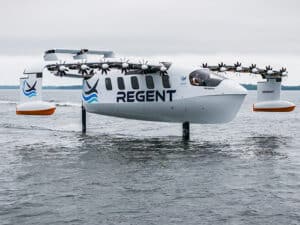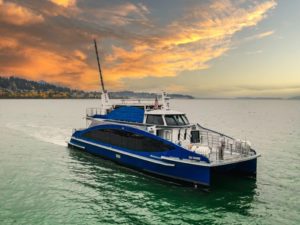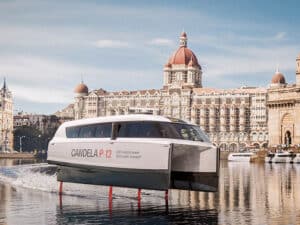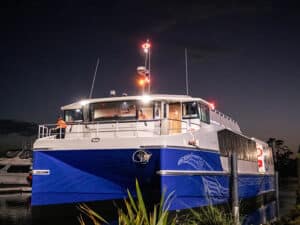
Danish electric ferry reports successful first year in service
Written by Nick Blenkey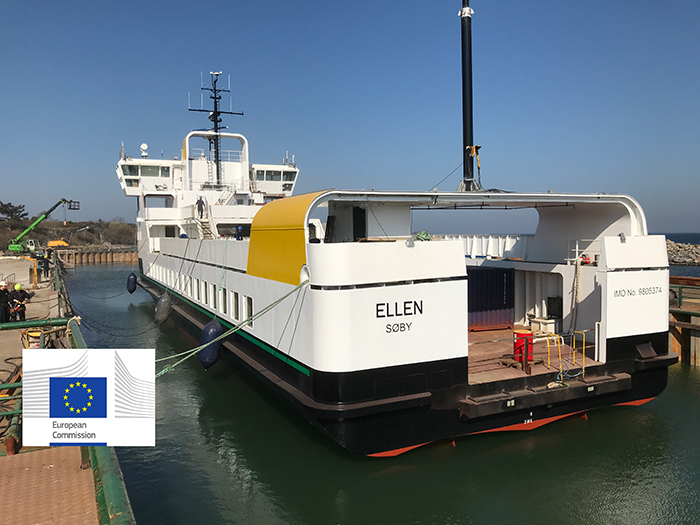
E-ferry was built with help of EU Horizon 2020 funding
In its first year of operation on a 22 nautical mile route, the pioneering Danish all-electric ferry Ellen has notched up some noteworthy milestones, according to Danfoss Editron .
Operating between the Danish islands of Ærø and Fynshav, the vessel was designed by Jens Kristensen Consulting Naval Architects and built by the Søby Værft shipyard. Just under 60 meters long and with a breadth of approximately 13 meters, the ferry travels at speeds of 12-12.5 knots, and is capable of carrying 198 passengers in summer months, with this capacity dropping to 147 during winter. It can also carry 31 cars or five trucks on its open deck.
With a 4.3 MWh capacity battery pack, the largest currently installed for maritime use, it is the first electric ferry to have no emergency back-up generator on board.
The E-ferry is the result of a project supported by the EU Horizon 2020 program that set out to achieve two main objectives. The first was to design and build an innovative fully-electric vessel which would incorporate an energy-efficient design, lightweight equipment and materials, and state-of-the-art electric-only systems with an automated high-power charging system. The second objective was to validate the feasibility and cost-effectiveness of the concept to the industry and ferry operators. The fully-electric ferry had to be able to cover distances of up to 22 nautical miles in the Danish part of the Baltic Sea that were, at the time, only operated on by conventional diesel-powered vessels.
In order to bring the project to life, several European manufacturers were approached to deliver technology and know-how in both technical and regulatory areas. The final team consisted of:
- The Ærø Kommune (Municipality of Ærø);
- Danfoss Editron;
- The Danish Maritime Authority (Søfartsstyrelsen);
- The Dansk Brand og Sikringsteknisk Institut;
- The Hellenic Institute of Transport (CERTH/HIT)
- Leclanché;
- Rådgivende Skibsingeniører Jens Kristensen ApS;
- Søby Værft (Søby Shipyard);
- uco Marine Group.
Danfoss Editron was selected to supply the vessel’s full electric drivetrain. The company’s Editron system comprises two 750 kW propulsion motors and two 250 kW thruster motors, both driven by synchronous reluctance assisted permanent magnet technology and controlled by DC/AC inverters.
Danfoss Editron also provided the vessel’s power management system, providing complete on-board automated power and load control. Additionally, the company delivered the onshore charging station and charging arm for the ferry’s 4.3 MW battery.
FIRST YEAR SERVICE RESULTS
Environmental benefits: Compared to a similar modern diesel-powered ferry, Ellen annually saves around 2,520 tons of CO2, 14.3 tons of NOX, 1.5 tons of SO2, 1.8 tons of CO and half a ton of particulate matter. The E-ferry is charged from the local grid on the island of Ærø, whose electricity demand is entirely powered by wind. Even if Ellen were to use electricity from the usual Danish grid mix, it would still save around 2,010 tons of CO2 annually.
High energy efficiency: Ellen delivers a propulsion system efficiency that reaches 85% grid-to-propeller. This is over twice as efficient as a conventional diesel-powered ferry (tank-to-propeller) and enabled a 20% reduction in travel time compared to the diesel-powered ferry it replaced. The E-ferry consumes around 1,600 kWh per return trip, performing better than what had been projected in the preliminary studies. This low average consumption combined with the efficiency of the Editron drivetrain system, the battery capacity of over 3.8 MWh and a fast charge of 4 MW at peak charge, proved that the E-ferry was a valid commercial alternative to its traditional diesel- and diesel-electric propelled counterparts.
Lower operational costs: Calculations show that the initial high investment costs for building the E-ferry will be compensated for after just five to eight years of operation. These calculations take into account the charging station’s cost and the possible need for replacing the battery pack twice over the ferry’s lifetime. The quick amortization means that the operator will save between 24% and 36% in operating costs compared to operating a diesel or diesel-electric ferry for the remainder of the ferry’s estimated 30-year lifetime.
Passenger safety and comfort: An evaluation conducted by the E-ferry project team after 1,000 successful journeys, shows that Ellen has won unanimous support from her passengers. Alongside its environmental benefits, passengers have highly rated the reduced noise and completely smog-free operations that come with operating the fully electric ferry. Overall, Ellen was rated either “extremely satisfying” or “very satisfying” in terms of safety, comfort and reduced travel time.


